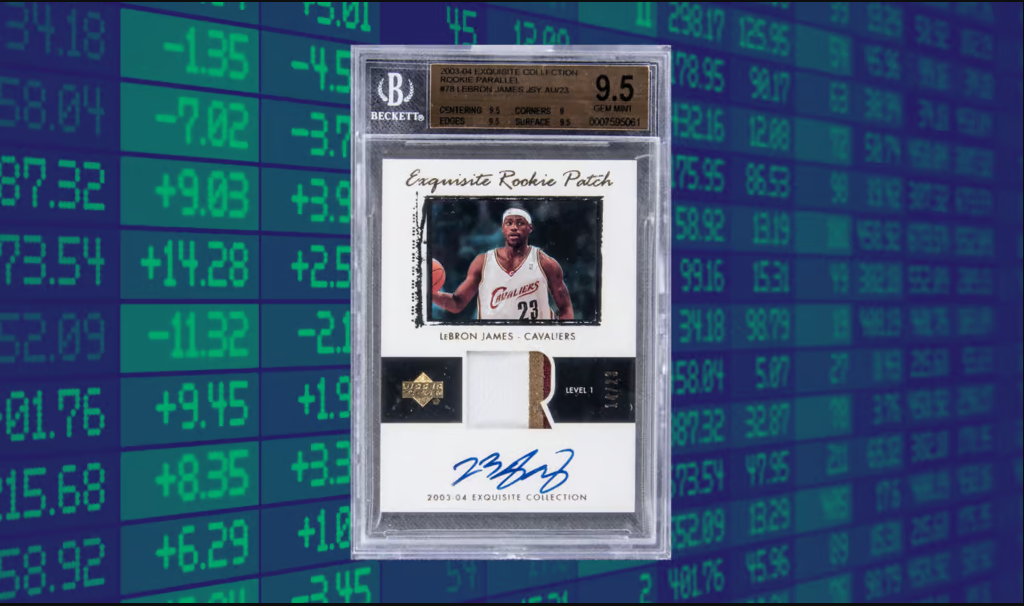The Sports Card Boom: Is There a Bubble?
Over the past few years, the sports card market has seen a surge unlike any other in its history. Beginning around 2018 and intensifying during 2020, card values skyrocketed, especially for those that were rare or of high-grade quality. What’s behind this sudden surge, and is the sports card industry currently in a bubble?
The Catalysts Behind the Boom
Several factors have converged to fuel the sports card renaissance:
- Nostalgic Revival: A significant portion of the population who grew up collecting cards during the ’80s and ’90s have reached an age where they possess disposable income. This group is revisiting the joys of their childhood, driving up demand for vintage cards.
- Emerging as an Investment: Beyond mere nostalgia, sports cards are being seen as serious investment avenues. This alternative to traditional investments mirrors the way art and other collectibles have been perceived in investment circles.
- Tech Influence: The digital age hasn’t left sports cards untouched. New platforms for trading, grading companies, and marketplaces have simplified the process, making it more accessible to a larger audience.
- Headlining Sales: Some sales are just too big to ignore. Cards like the 2009 Bowman Chrome Draft Prospects Mike Trout card, which fetched millions at auction, have created significant media buzz, pulling more people towards the hobby.
- The Pandemic Effect: The COVID-19 pandemic forced people indoors, leading to a resurgence in old hobbies. With financial markets being volatile during this period, non-traditional investments, including sports cards, gained popularity.
- The Rise of Breakers: A new form of online entertainment emerged, known as “Breaking”. Enthusiasts open packs or boxes of cards live on platforms like YouTube, driving excitement and demand.
The Bubble Debate
With any rapid rise in market values comes the inevitable question: is this sustainable, or is it a bubble waiting to burst? A bubble is typically characterized by prices that far exceed the asset’s intrinsic value. These inflated prices are often driven more by market euphoria than by grounded fundamentals.
By the close of 2021, the temperature of the sports card market showed signs of dropping. While some areas witnessed price corrections, others held their ground. It’s always challenging to predict market trajectories, but the specter of a bubble looms large in many discussions.
Navigating the Sports Card Market
If the world of sports card collecting and investing appeals to you, consider the following:
- Knowledge is Power: Dive deep into the market. Understand its history, the influential players, and the forces driving it.
- Tread Carefully: Always remember the cardinal rule – never invest money you aren’t prepared to part with.
- Spread Your Risks: Diversification isn’t just a principle for traditional investments. It’s equally relevant here.
- Stay Informed: This market is dynamic. Regularly updating yourself with the latest trends and news can be the difference between making a savvy move and a costly mistake.
For the latest insights on the sports card market and its future trajectory, always refer to recent industry publications, news sources, or dedicated card-collecting forums.
Forecasts for 2023 A Business Research Insights (BRI) recent study reveals that by 2028, the Sports Trading Card Market could touch USD 2881.7 million, boasting an impressive CAGR of 13.3% over the period.
The Promise of New Frontiers The Asia-Pacific region stands out as a beacon of opportunity, propelled by its growing sports enthusiasm and digital-forward audience.
Innovation at the Forefront The road ahead for this industry is paved with innovation. A focus on R&D, a dive into the potential of blockchain, and the development of interactive card attributes could steer the market’s course.
A Worldview: Regional Insights Let’s delve deeper into the geographic intricacies of the market:
- North America: This region leads the charge with its entrenched sports culture and a fervent collector base.
- Europe: Rooted in a rich sports legacy, Europe consistently sees demand, especially for soccer and basketball cards.
- Asia-Pacific: Bolstered by its burgeoning sports aficionados and tech-centric populace, this region is fast becoming a hotbed for sports cards.
- Global Corners: Latin America and the Middle East offer their unique sports tastes, enriching the overall market.
Regional Highlights
- North America: There’s a surge in appetite for limited edition cards and those adorned with verified player signatures.
- Europe: Soccer remains king, with cards featuring legendary players and national squads grabbing attention.
- Asia-Pacific: The rise in popularity of basketball cards and an inclination towards NFT ventures are noteworthy.
- Global Corners: Cards spotlighting local sporting champions and exclusive events are the focal points.
Why Dive Into This Market? The allure of the Sports Trading Card Market isn’t just its financial potential:
- Growth Trajectory: These collectible cards have the potential to appreciate in value, positioning them as enticing alternative investments.
- Engaging the Fans: Sports entities can leverage trading cards to fortify fan relationships and unlock new revenue avenues.
- Digital Emporiums: The digital realm stands ready to serve collectors and investors, offering a seamless avenue to trade and discover fresh collections.
In summary I’ll leave you with this twist: the sports card market, along with other collectibles, often face challenges during economic downturns. We’ve already witnessed a decline in the opening of sealed sports card wax, leading to a significant decrease in card values.
Much hinges on the state of our economy.
While we hope this represents the lowest point, there are several unresolved factors to consider. It’s crucial that solutions emerge timely.


